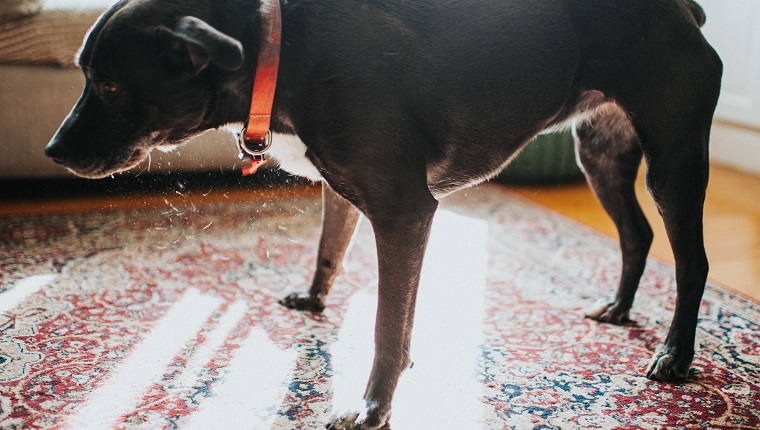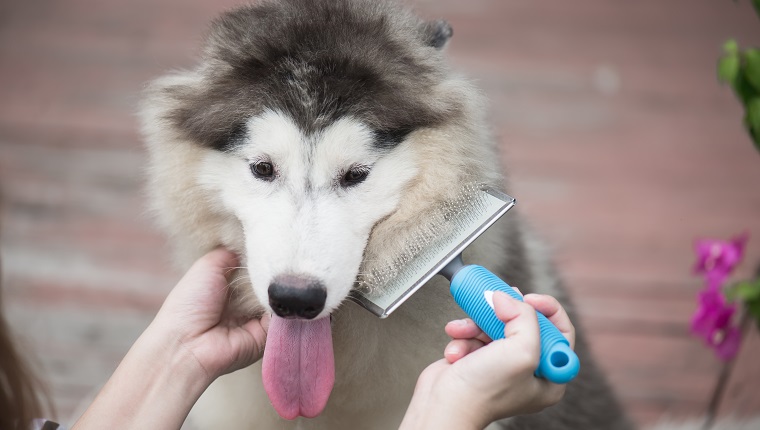You may have heard some people talk about the differences between hair and fur when it comes to dogs’ coats. That might lead you to wonder whether your own dog has hair or fur and whether that matters for you or your pooch. Some even claim that one coat type is more hypoallergenic than the other.
With that in mind, it may surprise you that, on a chemical level, there is no difference between hair and fur. They are both made of the same stuff — keratin. This substance is a protein compound that’s also found in nails and skin.
However, even though hair and fur are chemically the same, they can differ in their growth cycles, textures, and grooming needs. Here’s how you can tell if your dog has hair or fur and what it means for you and your pup.
Dog Hair Vs. Fur: How To Spot The Differences

If you want to know if your dog has hair or fur, there are a few ways to tell the differences by touch and sight.
First, hair tends to be longer in length than fur. It goes through a longer growth cycle, and the longer the growth cycle, the less frequently the hair sheds.
Hair generally feels smoother and finer to the touch than fur. It can be straight, wavy, or curly, and the curly hair is the most likely to trap hair that sheds, which can give the appearance that the dog is shedding less than they actually are because hair doesn’t float out into the environment as much.
Hair usually grows in a single layer, so the top of the hair won’t feel much different than it would closer to the skin.
Fur, on the other hand, is usually shorter and denser. It tends to have short growth cycles so that it can shed and grow in thicker during the cold months.
Fur usually sheds more easily than hair for that reason, and the coat doesn’t trap the fur that sheds as much as a coat of hair would. So you’ll probably be cleaning more of it off of your clothes and furniture, especially during seasonal changes when a new coat comes in.
Dogs with fur often — but not always — have a double coat, meaning they have a coarser overcoat and a soft, fine undercoat that helps them regulate their body temperature.
What It Means For Allergies

Many people want to know the difference in dog fur vs. hair so they can find out if their pooches are hypoallergenic. However, it’s not usually the hair or fur, itself, that causes allergies.
Dander and compounds in the skin and saliva of dogs are often the main factors that cause allergic reactions in humans. It doesn’t matter if dogs have hair or fur in that sense. Dogs essentially produce the same amount of allergens regardless of which kind of coats they have.
So why are some dogs considered hypoallergenic?
Well, while dogs produce allergens no matter which type of coats they have, the way their coats trap allergens can be quite different.
Curly hair, for example, tends to trap dander and skin cells more than fur. And because it usually sheds less frequently, those allergens stay on the dog and close to the skin rather than dispersing into the environment.
Fur, on the other hand, doesn’t trap these allergens as well. It also sheds more easily, which can spread dander around your home and on your clothing.
No dog is completely hypoallergenic. They all produce compounds that cause allergic reactions in humans. However, dogs who have curly hair may be the best choice for allergy sufferers, as their coats tend to trap the allergens rather than spreading them around.
Some find the difference in coats to be negligible when it comes to preventing allergies, but others notice a big difference in their symptoms when spending time with dogs who have different coats.
If you’re basing an adoption decision on whether you’ll be allergic to a dog or not, you should always spend some time with a dog before bringing them home so you know what to expect.
How To Care For Hair Or Fur

All dogs have grooming needs, and some have greater needs than others. Hair and fur both have advantages and disadvantages in this regard, but there’s much variation in coats among breeds and individual dogs.
Ultimately, it’s best to consult your veterinarian or groomer about your dog’s day-to-day grooming needs.
Generally, hair tends to trap particles and dead follicles more easily than fur. This can be a benefit when it comes to cleaning up your home, as they don’t shed as profusely.
That said, there’s a risk that trapped hair will cause knots and matting, and that can hold moisture, debris, and parasites closer to the skin, which can cause infections or infestations.
Dogs with hair should be brushed regularly to dislodge trapped material and prevent matting. Bathing can reduce the amount of allergens released during brushing; however, bathing too much can remove natural oils and dry the skin.
Ask your vet how much bathing is appropriate for your dog, as there’s too much variation among individual dogs to make a one-size-fits-all recommendation.
Fur doesn’t hold debris and follicles as much as hair, but these substances are spread more easily through shedding, and you’ll probably have to spend more time vacuuming and using lint rollers to keep your environment clean.
Brushing is still important for dogs with fur. It can remove debris and collect some fur that sheds before it has a chance to spread around your home. Knots and matting can still happen to dogs with fur, and it’s important to use a brush that will reach down to the undercoat to prevent this.
Does your dog have hair or fur? Do you notice a difference in your allergies or the way you have to groom your pooch? Let us know in the comments below!





